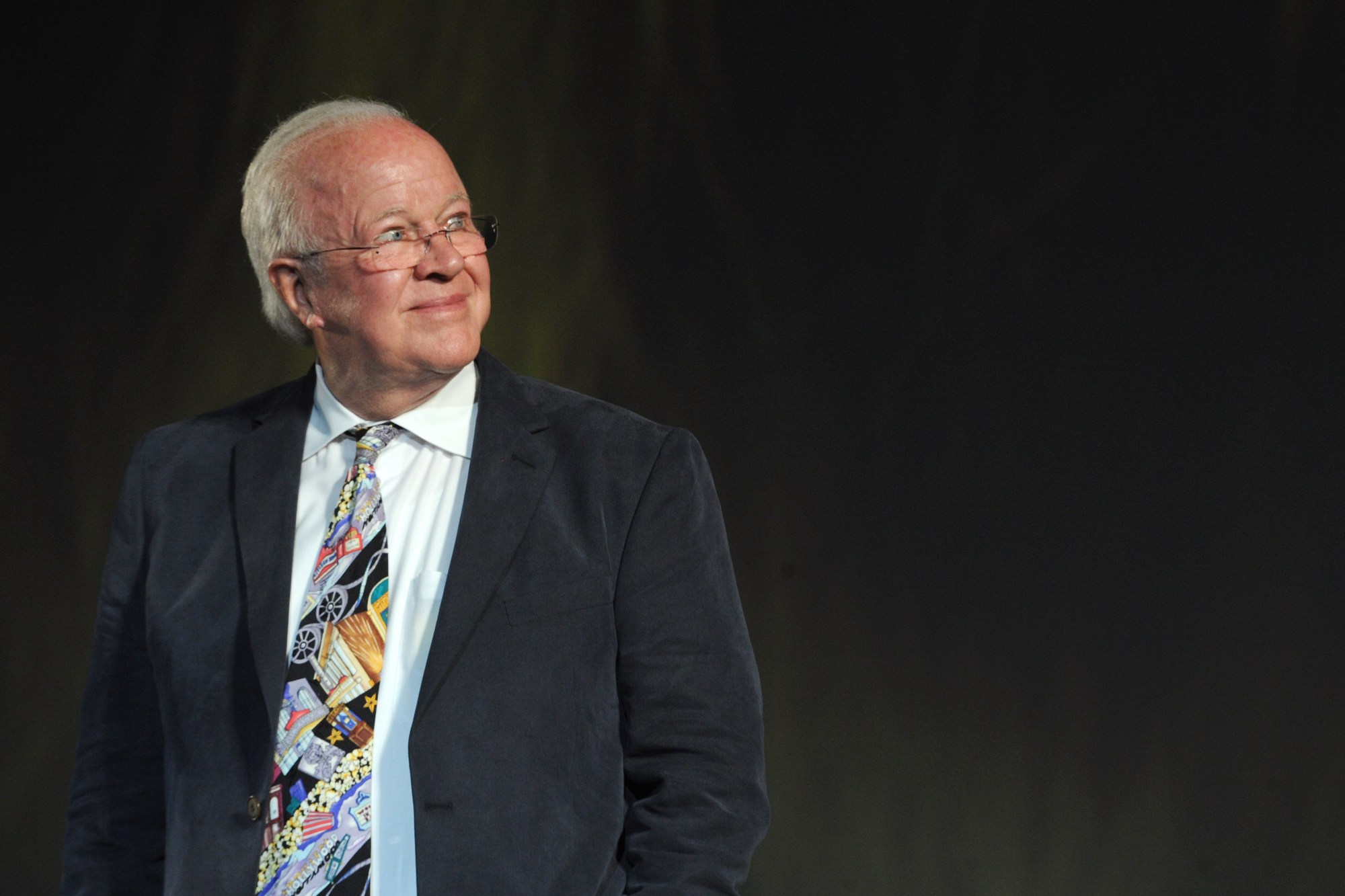
- Industry
Pioneering Special Effects Artist Douglas Trumbull Shaped Our Vision of Future
Part of the less popularly celebrated majesty of cinema lies in its collaborative nature compared to other art forms. Many directors, quite justifiably, may take a possessory filmmaker credit — after all, they are making literally thousands of decisions and molding a movie in their vision. But it is no less considerable a talent — and in fact in some ways a greater one — to be able to serve someone else’s creative instincts, and help them realize (or even surpass) their loftiest intentions.
That could certainly be said about pioneering special effects supervisor and inventor Douglas Trumbull, who passed away on Monday, February 7, at the age of 79, leaving behind an outsized legacy that belied his relatively sparse filmography. Through his work, predominantly in the science-fiction field, he shaped the way moviegoers saw and thought about the future — and thus, in no uncertain terms, impacted the future itself.
Trumbull wasn’t yet 25 years old when he developed a variety of groundbreaking photographic special effects techniques which would help Stanley Kubrick’s 1968 film 2001: A Space Odyssey achieve iconic status. In the 1970s, inspired but also a bit worn down by Kubrick’s task-master exactitude, Trumbull would direct his own film in between genre-defining visual effects work on Robert Wise’s The Andromeda Strain and Star Trek: The Motion Picture, as well as Steven Spielberg’s Close Encounters of the Third Kind.
Tired of “spaceships in front of star fields,” as he once quipped, and thirsting to pivot away from outer space adventures, Trumbull found challenge and inspiration on Ridley Scott’s trailblazing 1982 science-fiction epic Blade Runner, on which he worked as special photographic effects supervisor. Through these films and most especially his work behind the scenes, Trumbull was a tireless technological innovator and dedicated evangelist for “plussing” the theatrical experience.
Born in Los Angeles in 1942, Trumbull was a naturally inquisitive child. His interests in mechanical engineering, illustration, and of course, like many kids, movies helped shape his future occupational pursuits. (It also no doubt helped that his father, Donald, himself had a vocational interest in special effects, even working as an uncredited rigger on 1939’s The Wizard of Oz.)
When he left school, Trumbull got a job with Graphic Films which produced short films for the United States Air Force and NASA. After seeing a short documentary for the 1964 World’s Fair on which Trumbull worked, Kubrick briefly hired Graphic Films for 2001, before scuttling the contract when he relocated production to England. Trumbull, though, stayed on board, eventually rising to become one of four special effects supervisors on the movie. He started with painstakingly animated onscreen display read-outs which mimicked computer graphics and would go on to develop the adaptation and refinement of a unique “slit-scan” filming technique that would anchor the movie’s dazzling “stargate” sequence.
Trumbull made his directorial debut with 1972’s melancholic Silent Running, an environmentally-themed science-fiction movie starring Bruce Dern. His post-production work is generally credited with saving Star Trek’s big-screen debut — and thus perhaps its entire viability as an ongoing franchise. And of course, the immersive visual world of Blade Runner remains a genre pillar every bit as influential and important as 2001, impacting science-fiction for generations that followed.
Above all, Trumbull was someone who steadfastly pursued his own passions and interests. He famously turned down George Lucas‘s entreaty to oversee the effects for Star Wars, instead recommending his father (who would work on the movie’s miniature and optical effects unit). His experiences on Brainstorm — which saw Natalie Wood die tragically and under mysterious circumstances during production, and MGM fight for two years to collect an insurance payout rather than let its director finish the movie — so soured Trumbull on Hollywood that he never again directed a feature film.
Instead, he moved to Berkshire Hills, Massachusetts. There, Trumbull worked on occasional freelance projects (such as the Back to the Future: The Ride for Universal Studios Theme Park), but devoted most of his time to founding and running several effects production companies, and never stopped agitating and advocating for greater integration of technological infrastructure within the American studio ecosystem.
Terrence Malick persuaded Trumbull to serve as a special consultant for his 2011 film The Tree of Life, which notably eschewed conventional computer-generated effects work of the era, and in 2018 he would notch his last visual effects credit (and only his second of the last 40 years) on the independent film The Man Who Killed Hitler and Then the Bigfoot. Still, despite a comparatively slim résumé, Trumbull’s filmography reads like the tracklisting of a classic album, pared down to thunderous essentials.
Furthermore, his contributions to the moviemaking industry as a whole are manifold. They include Showscan, a large-format film using 70mm stock photographed at 60 frames-per-second; a digital capture and projection system called Magi, which films and projects native 3-D in 4K at 120 fps; and various practical camerawork innovations. For his professional efforts, Trumbull received an honorary Academy Award in 2012, as well as the infrequently bequeathed Georges Méliès Award from the Visual Effects Society the same year, for pioneering significant and lasting contributions to the art and science of the visual effects industry.
As cinema marches on, deeper into the 21st century, and filmmakers reshape the theatrical experience for audiences in ways that can at present be scarcely imagined, the contributions and inventions of Trumbull, and other artisans like him, will help provide both a stabilizing framework and propulsive fuel for such creative explorations.

